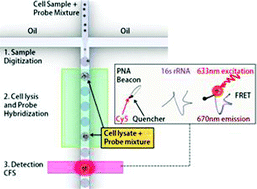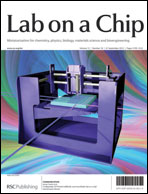Droplet microfluidics for amplification-free genetic detection of single cells†
Abstract
In this article we present a novel droplet microfluidic chip enabling amplification-free detection of single pathogenic cells. The device streamlines multiple functionalities to carry out sample digitization, cell lysis, probe–target hybridization for subsequent fluorescent detection. A


 Please wait while we load your content...
Please wait while we load your content...